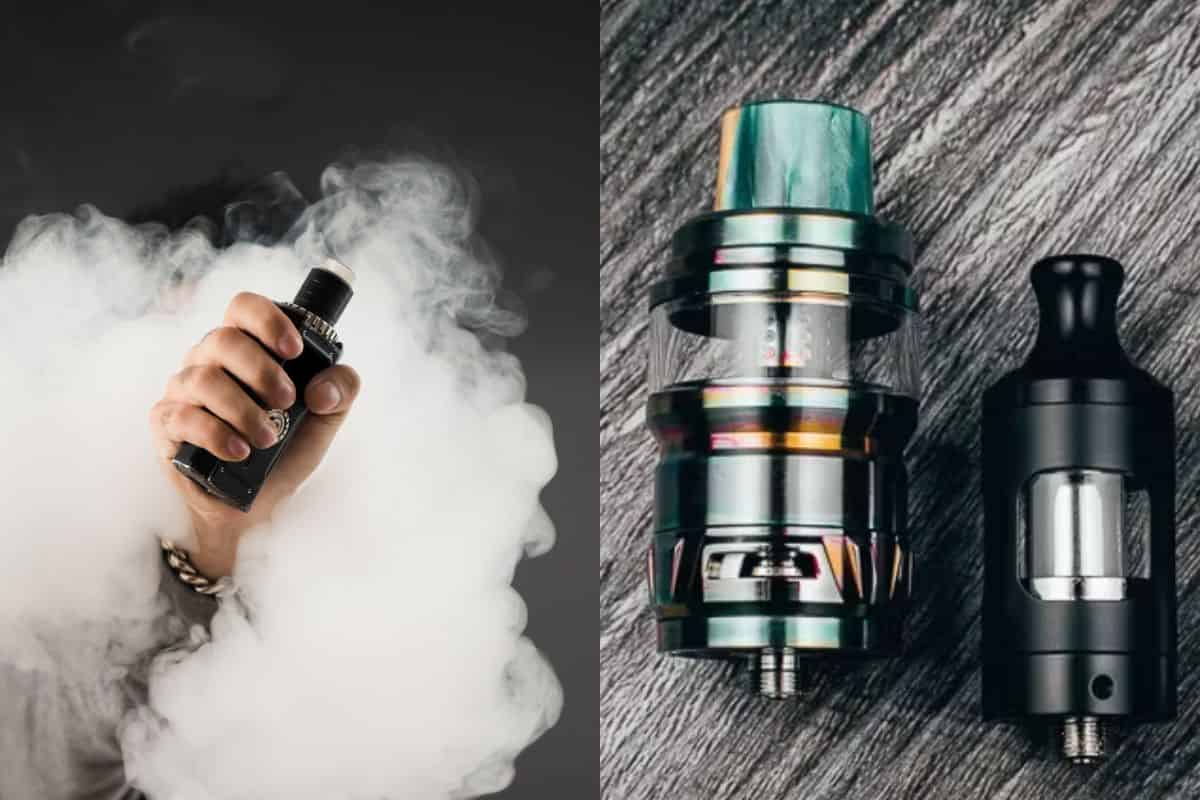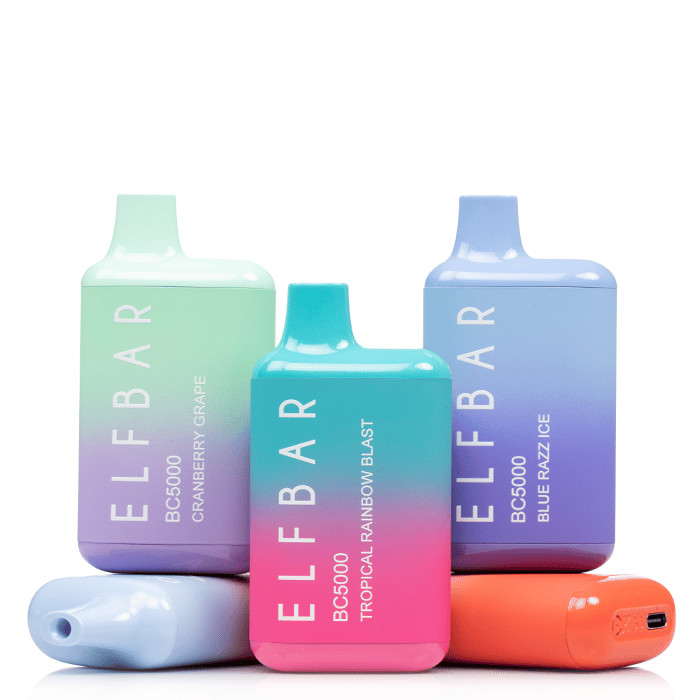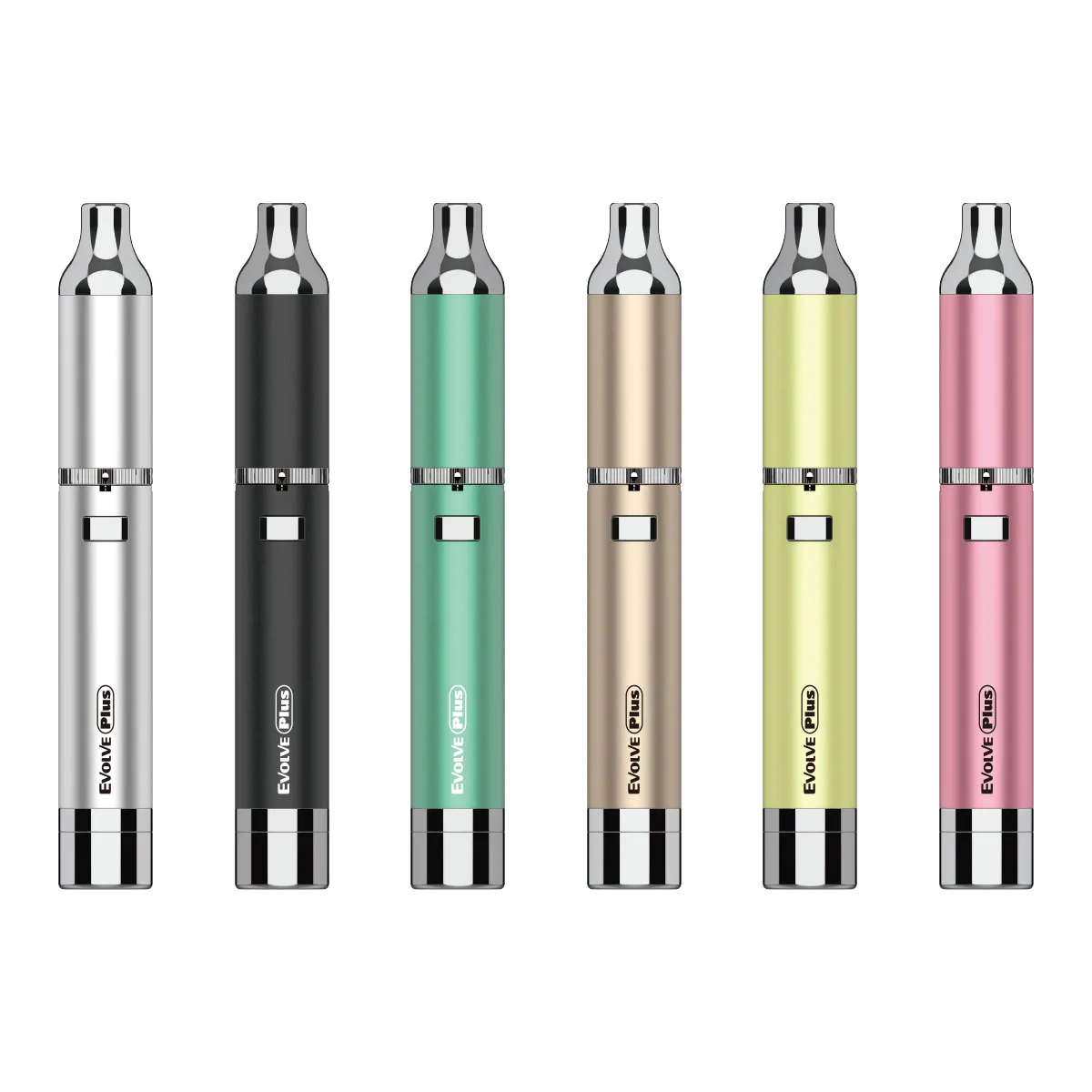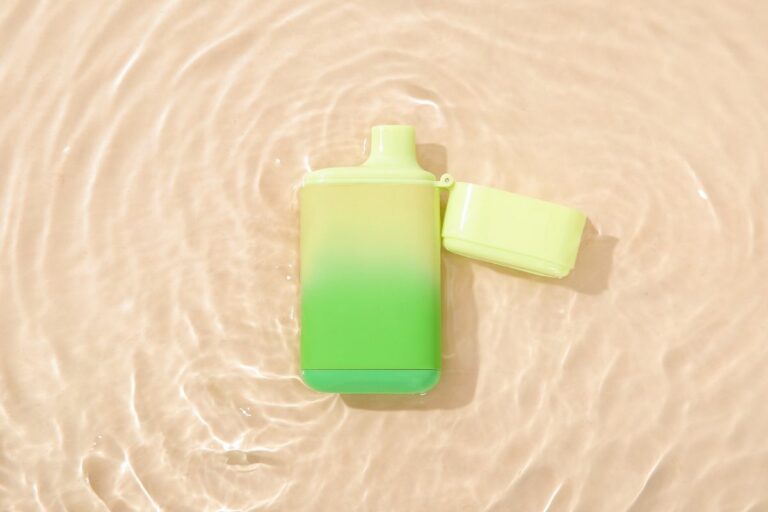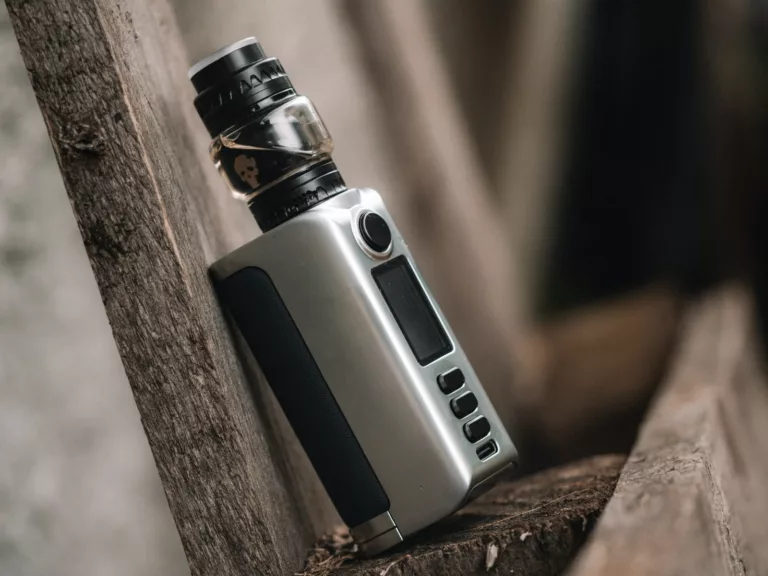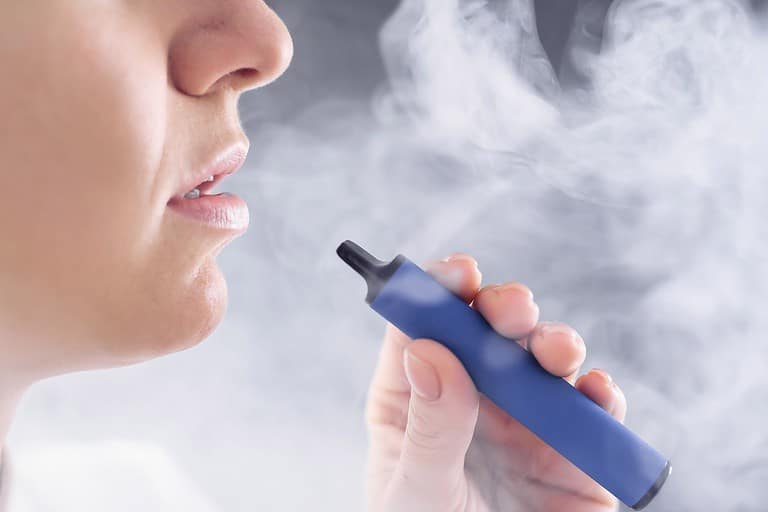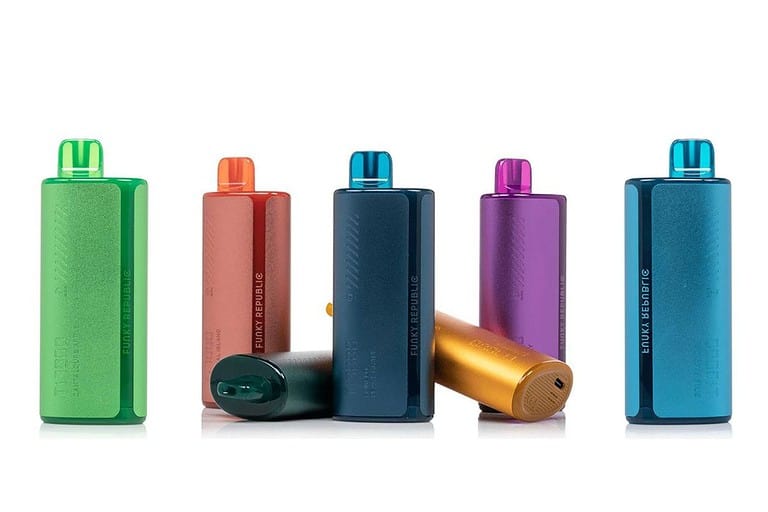Atomizer vs Vaporizer: A Comprehensive Comparison for the Informed User
Atomizers and vaporizers are essential components in various industries, particularly for those that require the conversion of liquids into aerosols or vapors. These terms are often used interchangeably; however, there are some distinct differences between them that should be understood when considering their applications.
An atomizer primarily functions to break a liquid substance into tiny droplets, creating a fine mist or spray. This process is widely used in applications such as perfume dispensers, paint sprayers, and air fresheners. On the other hand, a vaporizer functions to turn a liquid into vapor, typically through the means of heat. Vaporizers are commonly employed in industries like e-cigarettes, as well as the medicinal and recreational cannabis markets.
NEW CUSTOMER DISCOUNT
Save 15%
15% OFF YOUR ENTIRE ORDER FOR NEW CUSTOMERS USE CODE WELCOME15!
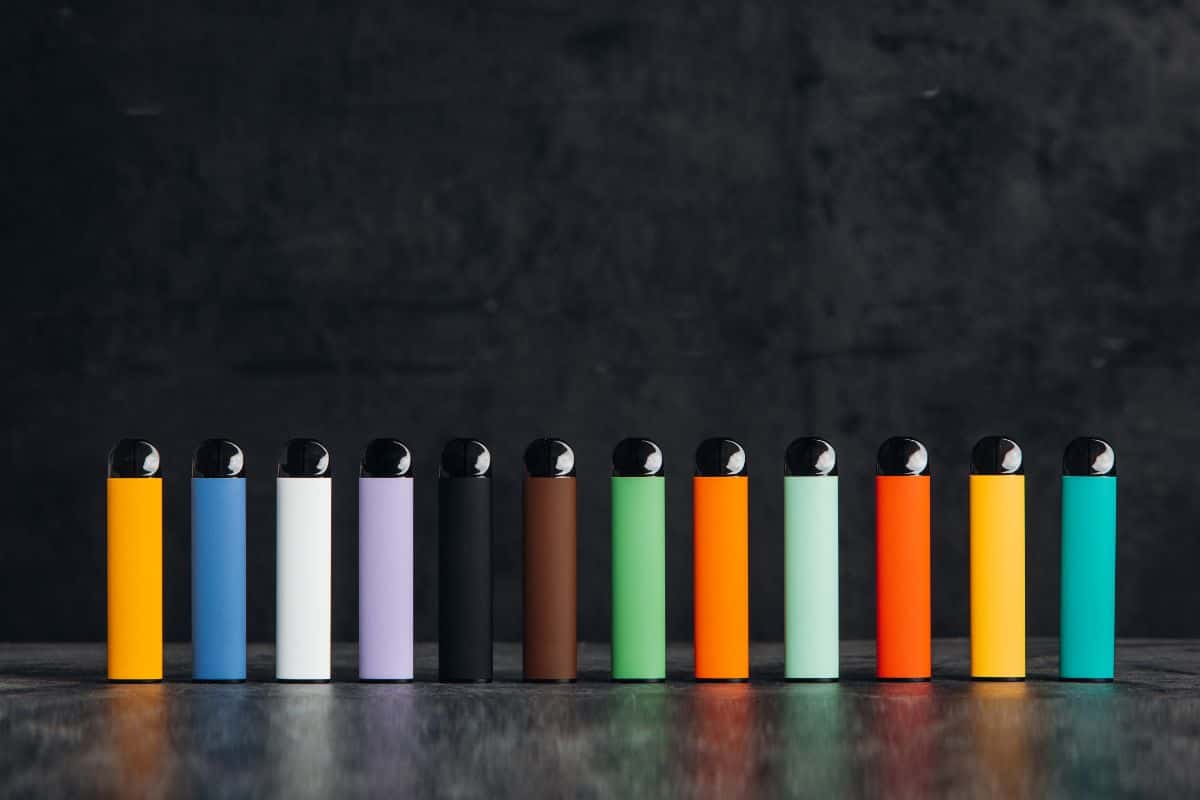
Understanding the key differences between atomizers and vaporizers can assist in making informed decisions when selecting the appropriate device for a specific application. By evaluating the intended use and desired outcome, one can determine whether an atomizer or vaporizer would be the most suitable choice.
Table of Contents
Understanding Atomizers
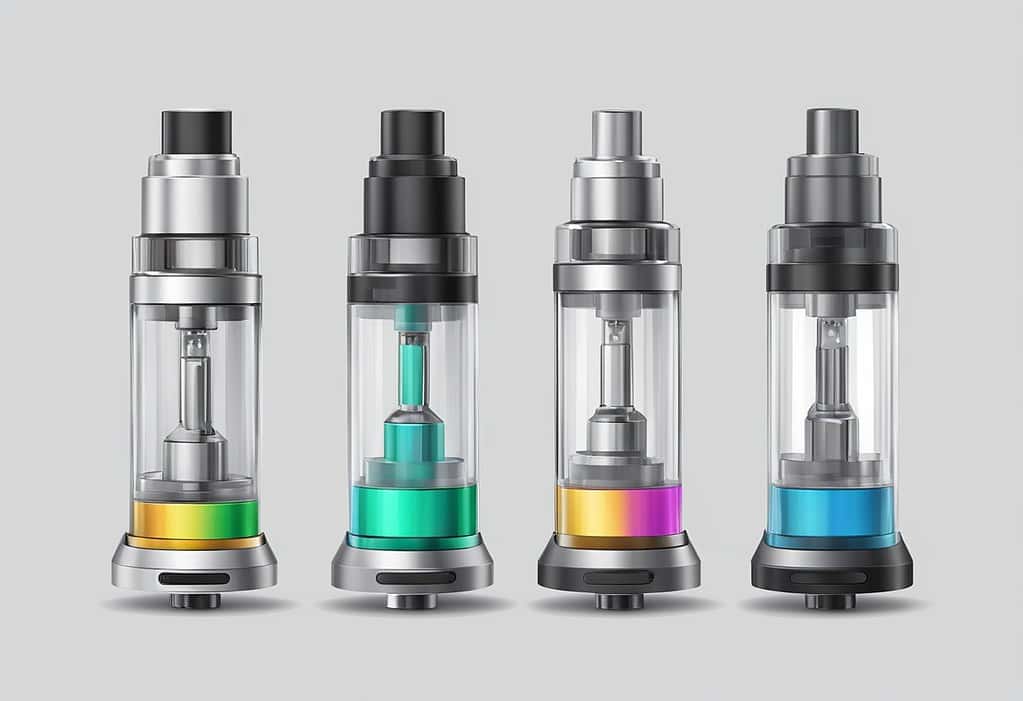
Basic Components of an Atomizer
Atomizers are an essential part of an e-cigarette or vaping device, responsible for converting e-liquid into vapor. They consist of three main components: the coil, the heating element, and the wick.
The coil is typically made from metal wire, such as Kanthal or stainless steel, and it’s wrapped around the wick. The purpose of the coil is to act as a heating element and heat the e-liquid until it turns into vapor.
A wick, commonly made from cotton or silica, absorbs e-liquid from the cartridge and feeds it to the coil for vaporization. The wick’s quality significantly impacts the vaping experience, as it influences the flavor and vapor production.
Cartridges contain the e-liquid and act as the atomizer’s reservoir. E-liquids come in various flavors and may contain nicotine, depending on user preference.
Types of Atomizers
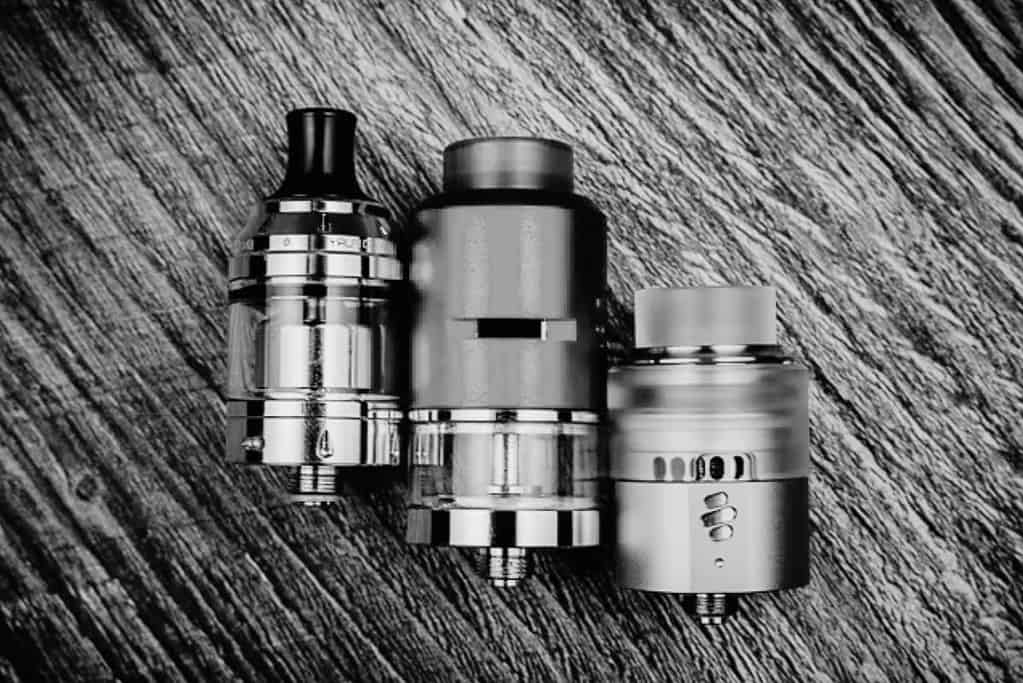
There are several types of atomizers on the market, including rebuildable atomizers, RDAs (Rebuildable Dripping Atomizers), disposable atomizers, and sub-ohm atomizers.
Rebuildable atomizers are designed for advanced users who prefer to customize their vaping experience. These atomizers allow users to build their coils and wicks, giving them control over the device’s performance.
RDAs, or Rebuildable Dripping Atomizers, require users to drip e-liquid onto the coils and wicks manually. RDAs provide an intense flavor and vapor output, making them popular among experienced vapers.
Disposable atomizers, like the Mr Fog Switch SW5500 Disposables and Elf Bar BC5000 ULTRA Disposable Vape, are designed for users looking for a more straightforward, hassle-free vaping experience. These devices feature integrated batteries, with a set number of puffs before disposal. Disposable atomizers are convenient for beginners or those seeking a low-maintenance option.
Sub-ohm atomizers are designed to produce large clouds of vapor, providing an enhanced vaping experience. These atomizers utilize low resistance coils (below 1 ohm) and require higher power levels to generate intense vapor output.
By understanding these different types of atomizers, users can choose the most suitable device to meet their specific vaping needs and preferences.
Exploring Vaporizers
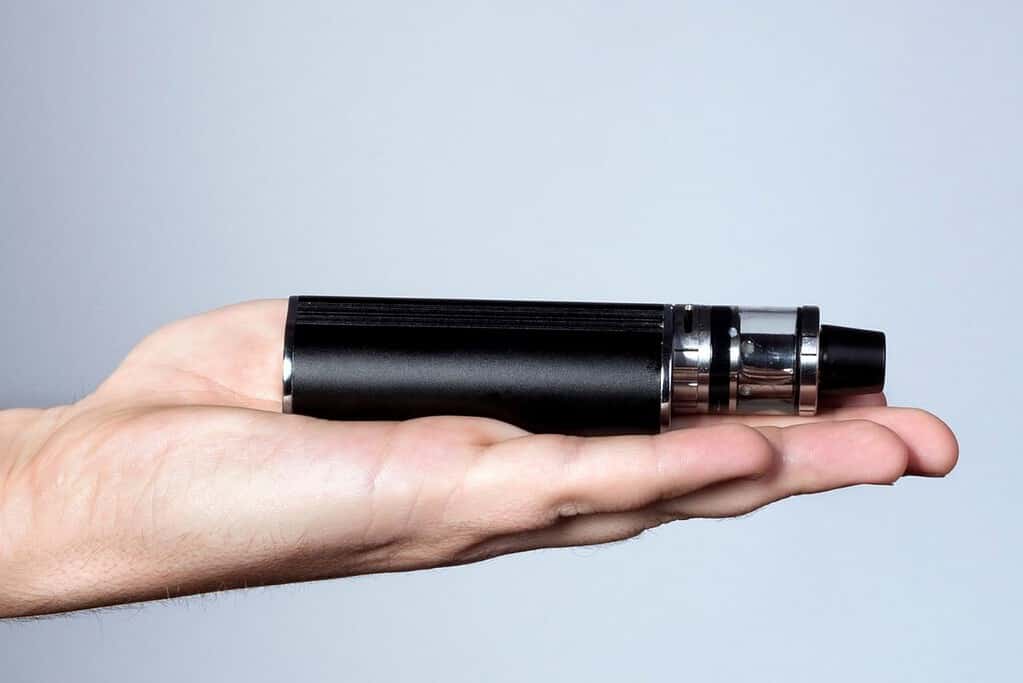
Core Elements of a Vaporizer
A vaporizer is a device used to heat materials such as herbs, concentrates, or e-liquids, producing vapor that is inhaled for its desired effects. The main components of a vaporizer include the heating coil, battery, and a chamber that holds the material being vaporized. The heating coil is responsible for generating heat, which is then transferred to the material, causing it to vaporize. The vape coil is typically made of metals such as kanthal, stainless steel, nickel, or titanium.
The battery is an essential element of a vaporizer, providing power to the heating coil. Various vape pens come with different battery capacities, which can impact the duration of the vaping session and the overall vaping experience. It’s important to choose a vaporizer with a battery capacity that matches your needs.
Kinds of Vaporizers
Vaporizers are available in a wide range of designs, catering to different preferences and materials. Some common types of vaporizers include:
- Dry Herb Vaporizers: These devices are specifically designed for vaporizing ground herbs such as cannabis, holding the material in a chamber that is heated to release the active compounds in the form of vapor.
- Concentrate Vaporizers: These vaporizers, like the Yocan Evolve Plus Vaporizer, are tailored for use with wax, oil, and other concentrated forms of cannabis or CBD. They often feature a coil or a chamber designed to efficiently heat and vaporize the concentrate.
- Electronic Cigarettes: Also known as e-cigarettes or vape pens, these devices are meant for use with e-liquid, which typically contains nicotine, propylene glycol (PG), vegetable glycerin (VG), and flavorings. The coil heats the e-liquid, transforming it into vapor that users inhale.
While there may be variations in design and features among these types of vaporizers, the core elements of coil, battery, and chamber remain consistent across the board, allowing users to enjoy a customized, satisfying experience with their chosen materials.
Atomizer in E-Cigarettes
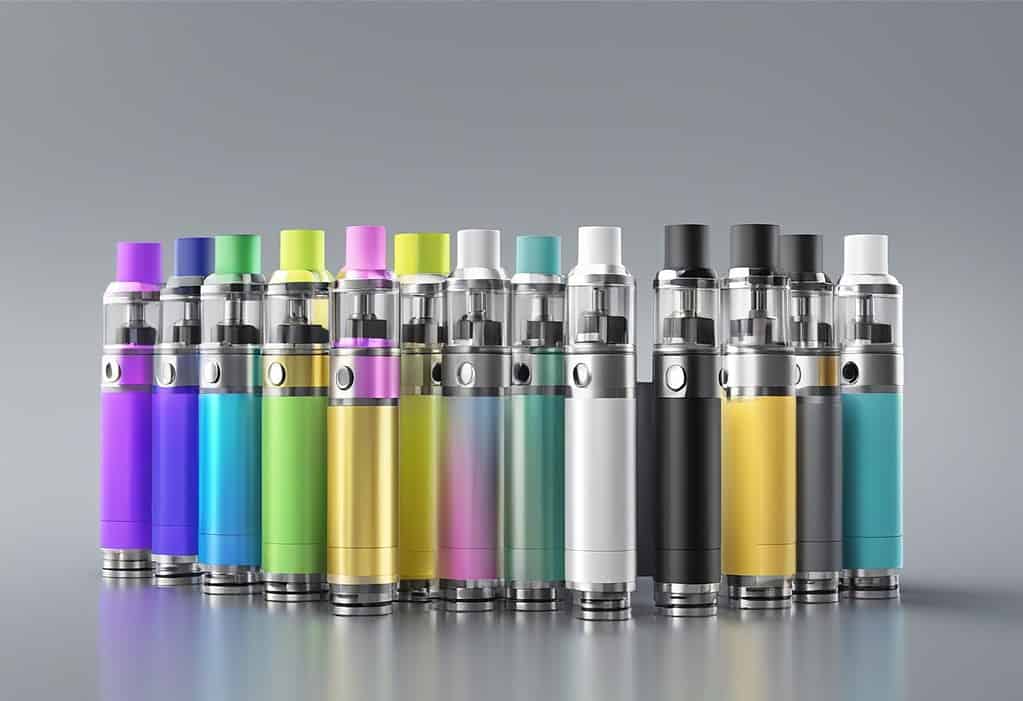
E-Cigarette Components
E-cigarettes have multiple components, including a battery, an atomizer, and a prefilled e-liquid container. The battery supplies power to heat the atomizer, which is responsible for vaporizing the e-liquid. The vapor is then inhaled by the user, providing a similar experience to smoking traditional cigarettes. There are several types of atomizers, such as cartomizers, clearomizers, and coils.
Cartomizers and clearomizers are both parts of the atomizer family. Cartomizers combine a heating coil and a wick-filled cartridge in one unit, while clearomizers have a transparent tank for holding the e-liquid and a separate coil for heating. Both cartomizers and clearomizers can be disposable or refillable, depending on the design.
Atomizer Role in E-Cigarettes
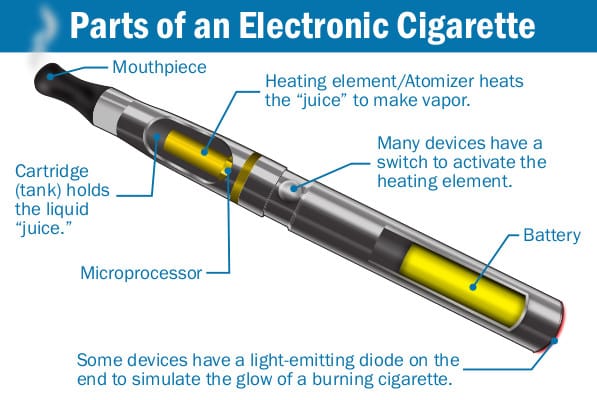
The atomizer plays a crucial role in the e-cigarette experience. It heats the e-liquid stored in the cartridge or tank and turns it into vapor that the user inhales. Coils, which are the heating element of the atomizer, are made from various materials, such as Kanthal, stainless steel, or nickel. The coil resistance determines the temperature at which the e-liquid is vaporized, affecting vapor production, flavor, and throat hit.
Clearomizers and cartomizers differ in appearance and performance. Clearomizers are transparent, allowing users to monitor their e-liquid levels easily. They typically use a bottom coil design, with the coil located at the base of the tank. Cartomizers, on the other hand, have a more straightforward design and use a top coil design, where the coil is placed near the mouthpiece.
Using a rechargeable e-cigarette ensures a consistent vaping experience by allowing the user to replace the battery when it becomes depleted. This feature is particularly important for heavy vapers, as it prevents loss of power during extended use.
In summary, the atomizer plays a vital role in e-cigarettes by converting e-liquid into vapor for inhalation. Cartomizers and clearomizers are the main types of atomizers, each with its unique features and advantages. By understanding the differences between them, users can make informed decisions about the best type of atomizer to suit their needs and preferences for a satisfying vaping experience.
Understanding the Vaping Process

Mechanism of Vaping
Vaping is a popular alternative to smoking that involves heating a liquid, often referred to as e-juice or vape juice, until it turns into a vapor which is then inhaled through a mouthpiece. E-juice usually contains a combination of nicotine, flavorings, and a mixture of propylene glycol and vegetable glycerin. The main advantage of vaping over smoking is that vaporizers do not produce smoke, only vapor.
The process of turning e-juice into vapor involves two essential components of vaping devices: the atomizer and the vaporizer. The atomizer is responsible for heating the e-juice, while the vaporizer creates the ideal environment to facilitate vapor production. Together, these components play a crucial role in determining the flavor, taste, and overall experience of vaping.
Importance of Coil and Wick in Vaping
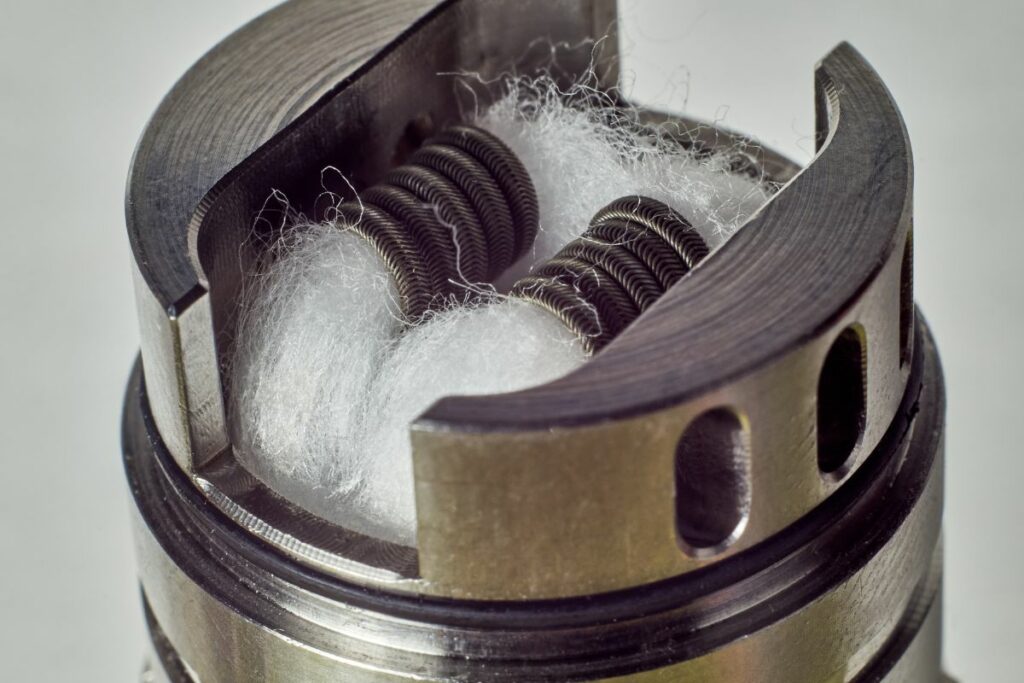
The coil and wick are key components within the atomizer that contribute to the vaping experience. The coil is a metal wire, most commonly made of kanthal, nichrome, or stainless steel, that heats up when an electrical current is passed through it. This heat is then transferred to the wick, which is typically made of cotton or other absorbent material, and soaked in e-juice.
When the wick is heated, the e-juice is vaporized, producing a flavorful and aromatic vapor that can be inhaled. The quality of coil and wick materials, as well as their positioning within the atomizer, significantly impact the overall performance of a vaping device. Optimal coil and wick configurations can result in a more satisfying experience, including enhanced flavor and vapor production.
For those looking for a tasty and potent option, products like the DazeD8 Sour Nerds Delta 8 Gummies provide an enjoyable experience with a unique approach to consuming Delta-8 THC. Alternatively, CBD gummies are another popular choice among vape enthusiasts, offering various potential benefits without the effects of THC. With plenty of CBD-infused gummies on the market, it is easy to find a flavor and potency that suits individual preferences and needs.
In conclusion, understanding the vaping process and the roles of the atomizer and vaporizer is essential for appreciating the nuances of vaping and making informed choices regarding vaping devices and products.
Atomizers in Humidifiers
Working of Atomizer in Humidifiers
Atomizers play a crucial role in humidifiers, which are designed to increase the moisture level in the air. By breaking down water particles into a fine mist, atomizers enable humidifiers to distribute moisture evenly throughout a room. The atomization process occurs when water passes through the atomizer, which uses high-frequency vibration or mechanical force to create the mist.
One common type of humidifier that utilizes atomization is the cool-mist humidifier. In these devices, an atomizer produces a cool mist that helps maintain comfortable humidity levels without raising the room’s temperature. Ultrasonic humidifiers, on the other hand, rely on an ultrasonic atomizer to generate high-frequency vibrations, transforming water into an ultrafine mist for rapid dispersion of moisture.
Types of Humidifiers
There are different types of humidifiers available in the market, and the choice of atomizer varies according to the specific device. Here are some popular types of humidifiers:
- Cool-mist humidifier: This type of humidifier employs an atomizer to create a fine mist, which is then expelled into the room using a fan. The cool mist helps to maintain optimal humidity levels without increasing the room temperature.
- Ultrasonic humidifier: An ultrasonic humidifier uses a high-frequency vibrating diaphragm or plate to create an ultrafine mist, emitting it directly into the air. The ultrasonic atomizer technology is efficient and quiet, making it suitable for use in bedrooms and other quiet spaces.
- Evaporative humidifier: Rather than using an atomizer, these devices release moisture through evaporation. Water is absorbed into a porous wick or filter and then evaporated by a fan, ensuring even distribution of humidity throughout the room. Though efficient, this method may require periodic replacement of filters for optimal performance.
In summary, atomizers are a key component in humidifiers, responsible for producing the fine mist necessary to maintain comfortable moisture levels in the air. By understanding the working mechanism and differences between the types of humidifiers, users can select the most suitable device for their needs.
Health Impacts of Atomizers and Vaporizers
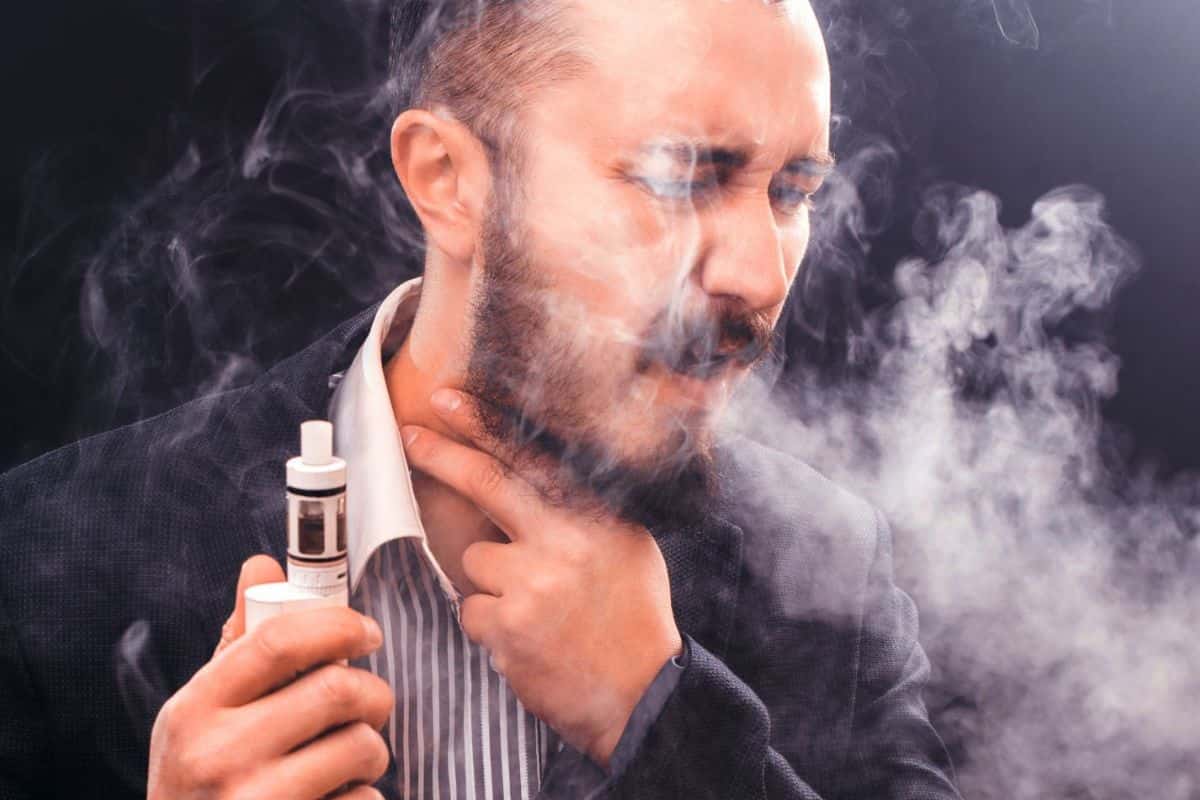
Using for Relieving Cold and Allergies
Atomizers and vaporizers can be helpful in alleviating symptoms of cold and allergies. They work by breaking down a liquid substance into fine particles and releasing it in form of vapor or mist. The fine mist from atomizers can help in clearing nasal congestion and providing relief from symptoms of flu, allergies, and asthma. In some cases, essential oils or natural remedies can also be used in these devices to provide added therapeutic benefits.
Possible Health Risks
Despite their use for relief, atomizers and vaporizers are not without potential risks. One concern is the possible inhalation of harmful substances, especially when it comes to e-cigarette atomizers used in vaping. Overheating of the atomizer could release harmful chemicals, which might lead to irritation and inflammation in the respiratory system, skin, and lungs.
Additionally, the continuous use of vaporizers can cause the air to become too humid, leading to the growth of mold and mildew, which can aggravate allergies and asthma symptoms. Therefore, it is essential to maintain appropriate humidity levels and keep devices clean.
Benefits and Safety Measures
To minimize potential risks and obtain the benefits of atomizers and vaporizers, some safety measures should be followed. Selecting a device that is designed for therapeutic purposes and adhering to the manufacturer’s guidelines on usage can help in ensuring safety. For instance, only approved e-liquids and essential oils should be used, and atomizers should not be overheated to prevent the release of harmful compounds.
Proper cleaning and maintenance of the devices are also crucial to prevent bacterial growth and ensure adequate hygiene. Finally, considering individual needs and pre-existing health conditions is important when selecting an appropriate atomizer or vaporizer for personal use. By following these guidelines, users can enjoy the potential benefits of atomizers and vaporizers, improving health and well-being without compromising safety.
Maintenance and Troubleshooting
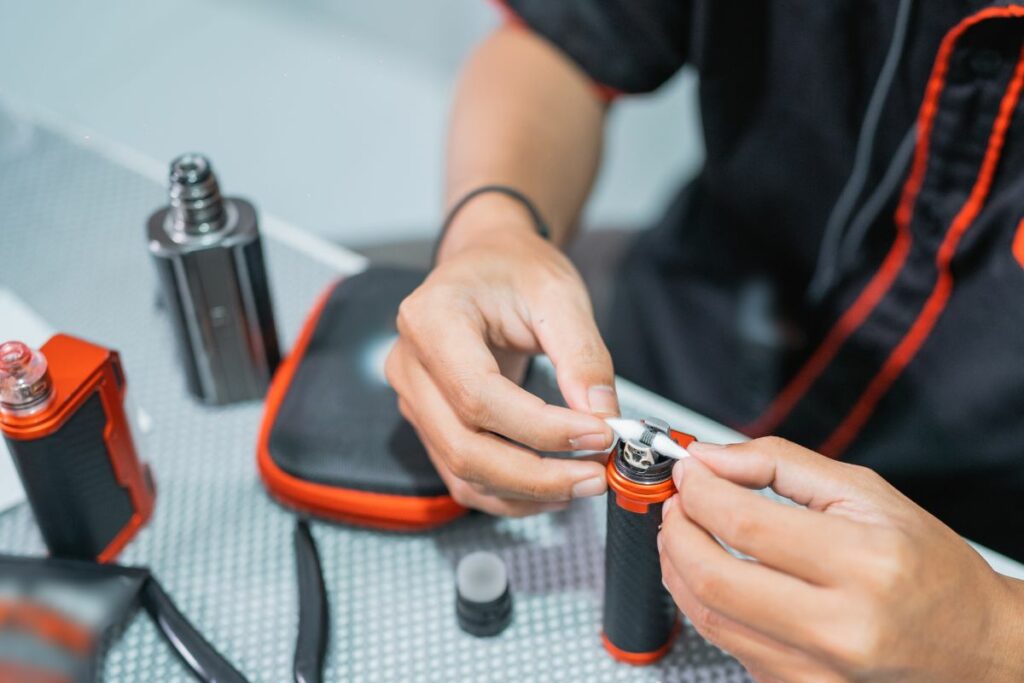
Cleaning and Proper Handling
In order to maintain optimal performance, both atomizers and vaporizers require regular cleaning and proper handling. For clearomizers, it is essential to clean them periodically using a simple solution such as white vinegar to avoid any residue build-up that can impact the overall vaping experience. After cleaning, all parts must be thoroughly rinsed and dried.
For atomizers, the process is quite similar, requiring occasional disassembly, cleaning with a soft brush, and rinsing. Most manufacturers provide a detailed guide on how to clean their specific products, ensuring the safety and longevity of the device.
It is crucial to handle both atomizers and vaporizers with care, as they contain delicate components. Avoid dropping or applying excessive pressure to the devices, as this can result in damage and malfunction.
Recognizing and Fixing Common Issues
Some common issues that may arise when using atomizers and vaporizers include coughing, poor vapor production, and leaks. Understanding these problems and knowing how to address them can significantly improve your vaping experience and ensure the device’s reliability.
- Coughing: Coughing may occur if the device is not used properly, or if the e-liquid is too harsh. Beginners should start with low nicotine e-liquids and gradually increase the nicotine strength if desired. Furthermore, adjusting the device’s settings and reviewing proper inhalation techniques can help minimize coughing.
- Poor Vapor Production: If the vapor produced is less than expected, it could mean that the device needs cleaning or has a damaged component. Regular maintenance can prevent this issue, but if it persists, consult the manufacturer for further assistance.
- Leaks: Leaking may occur due to issues with the clearomizer, seals, or the handling of the device. Overfilling the tank, insufficient tightening of connections, or using incompatible parts may cause leaks. Make sure to follow the manufacturer’s recommendations and guidelines for assembly, filling, and handling.
With proper maintenance, cleaning, and troubleshooting, atomizers and vaporizers can provide a convenient and customizable vaping experience. By taking a few precautions and addressing issues promptly, users can enjoy safe and reliable vaping sessions in a confident and knowledgeable manner.
Choosing the Right Atomizer or Vaporizer
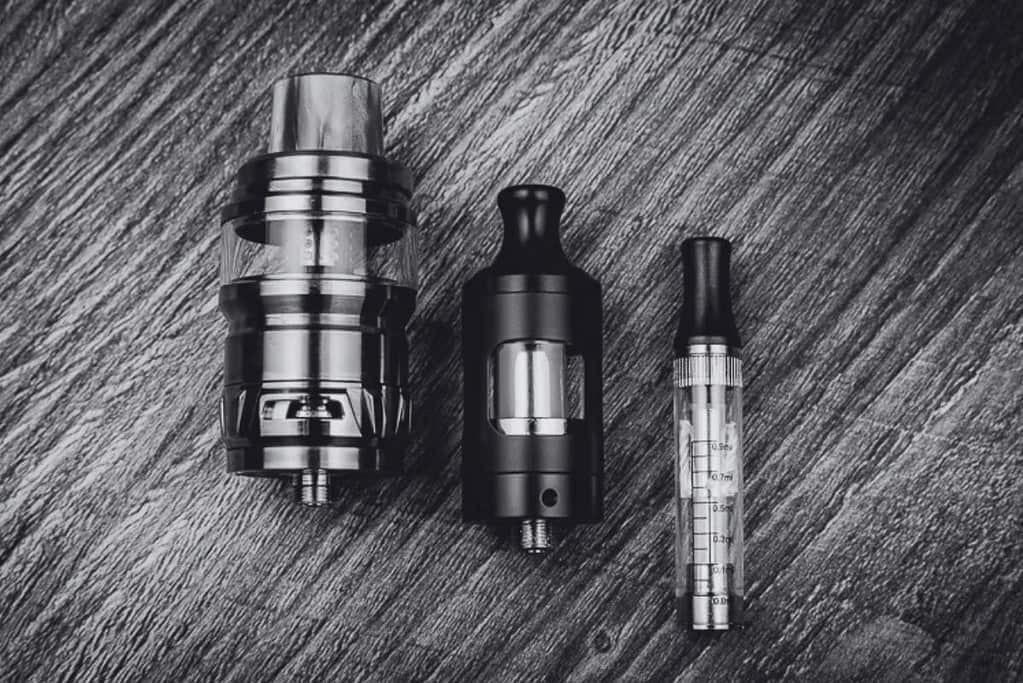
Considering Personal Needs
When selecting an atomizer or vaporizer, it’s essential to consider your personal needs and preferences. Comfort and convenience play a significant role in determining the appropriate choice for you. If you prefer a more straightforward vaping experience without much maintenance, you might want to consider a disposable vape. These vapes are simple to use and can be easily discarded after use. On the other hand, if you enjoy customizing and fine-tuning your experience, a vape with rebuildable models might be a better fit.
Comparing Costs
Budget is another important aspect to consider when choosing an atomizer or vaporizer. The cost of vaping devices can vary widely, depending on factors such as quality, functionality, and design. Disposable vapes are generally more affordable, with options available under $15, under $20, and under $30. While these lower-cost options may be appealing, they may not always offer the same performance and durability as more expensive models. Therefore, it’s essential to balance your budget with the features and quality you desire in your vaping experience.
Browse popular vape collections:
- Nicotine Disposables
- 2000 Puff Nicotine Disposable Vapes
- 2500 Puff Nicotine Disposable Vapes
- 5000 Puff Nicotine Disposable Vapes
- 6000 Puff Disposable Nicotine Vapes
- 7000 Puff Nicotine Disposable Vapes
- Disposable Vape Deals
- Best Vape Brands
- 8000 Puff Nicotine Disposable Vapes
- 9000 Puff Nicotine Disposable Vapes
- 5% Nicotine Disposable Vapes
- Rechargeable Nicotine Disposable Vapes
- Vape Coils
- Dab Wax Pens
- Dab Wax Pen Battery
- Yocan Vapes
- Vape Cases
Frequently Asked Questions
What does an atomizer do in vaping?
An atomizer is the essential component in a vaping device that heats the e-liquid and turns it into vapor. It consists of a coil and a wicking material that absorbs the e-liquid. When the device is activated, the coil heats up and vaporizes the e-liquid, which is then inhaled by the user. Atomizers can be found in various types of vaping devices, including disposable vapes and refillable e-cigarettes.
How do clearomizers and atomizers differ?
Clearomizers and atomizers are both used for vaping, but they have some key differences. Atomizers solely focus on the heating element and the wick, while clearomizers combine the atomizer and a transparent e-liquid reservoir into a single unit. This design allows users to see how much e-liquid remains in their device and makes refilling easier. Atomizers, on the other hand, are typically found in more advanced devices with customizability features, providing a more personalized vaping experience.
Are vape tanks and atomizers the same thing?
Vape tanks and atomizers are distinct components within a vaping device with differing functions. The atomizer is responsible for heating and vaporizing the e-liquid, while the vape tank serves as the storage container for the e-liquid and houses the atomizer, allowing e-liquid to flow to the coil and wick. Both are necessary for proper vaping function, but their roles and features differ.
What is the meaning of ‘no atomizer’ in vaping?
A “no atomizer” message on a vaping device generally indicates that the device is unable to detect the atomizer or that there is a connection problem between the atomizer and the battery. This issue can occur when the atomizer coil is not properly screwed in or if there is a build-up of debris on the connection points. Cleaning the connection points and ensuring the atomizer is correctly attached can often resolve this issue.
How does an atomizer compare to a cartomizer?
Both atomizers and cartomizers are utilized in vaping devices, but their designs and functions differ. While atomizers contain a coil and wick for heating e-liquid, cartomizers combine the heating element with a pre-filled e-liquid cartridge. Cartomizers are typically found in older or cheaper vaping devices and offer a more straightforward vaping experience. In contrast, atomizers provide more options for customization and are often favored by experienced vapers.
What factors affect the price of vape atomizers?
Various factors can influence the price of vape atomizers, including materials, coil types, and customizability. Atomizers made from materials like stainless steel, gold, or platinum may cost more than those made from less expensive metals. The type of coil used—such as single, dual, or mesh coils—can also affect the price. Ultimately, the price will be determined by factors such as build quality, the technology used, and the individual’s preferences for vaping performance.

